
Imperial German U-Boat Clock | Attributed To U-20 | Lusitania Interest
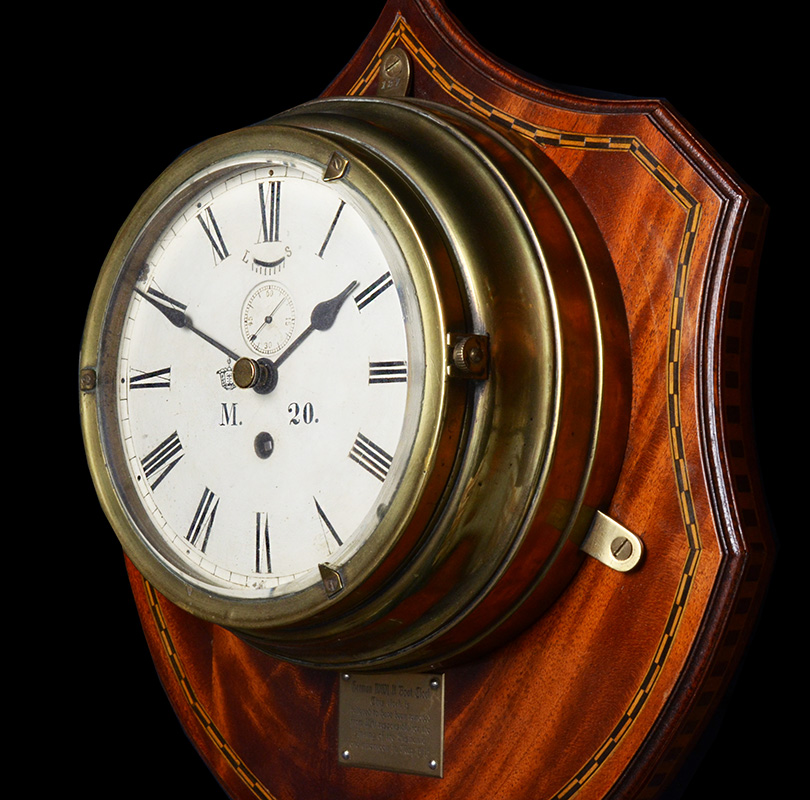

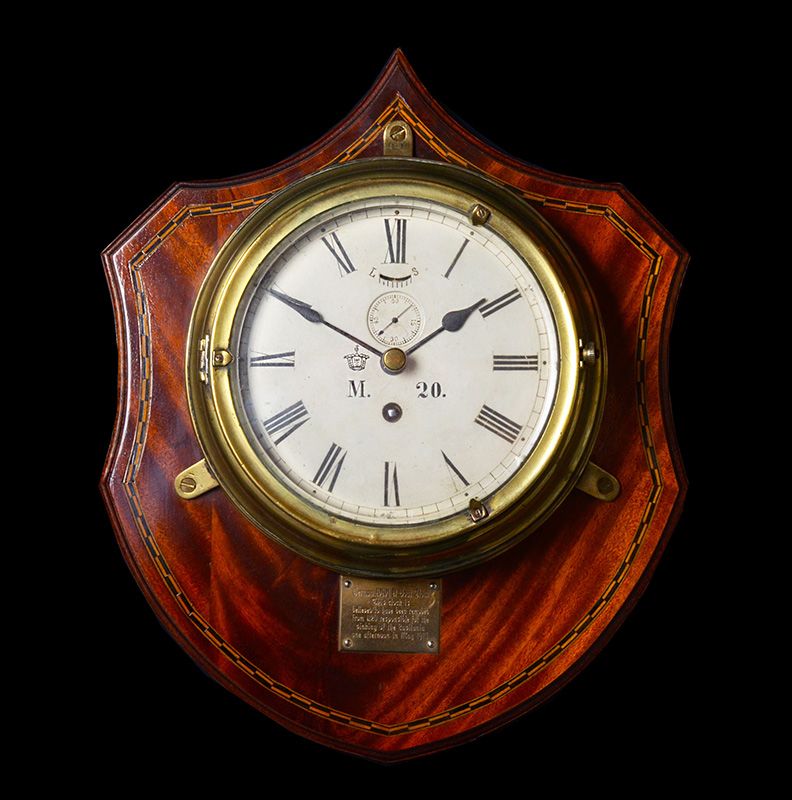
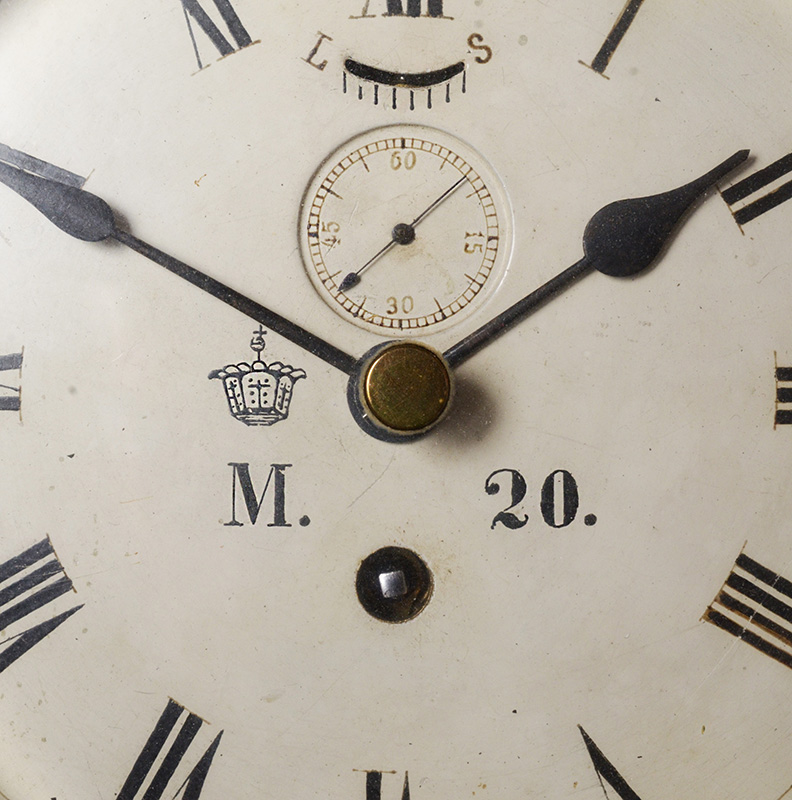
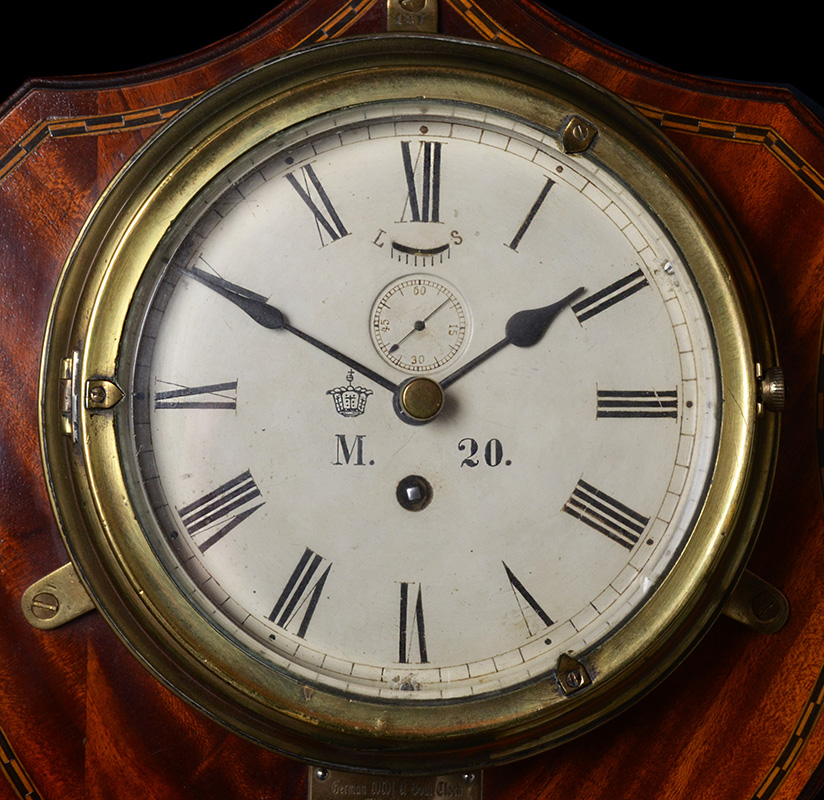
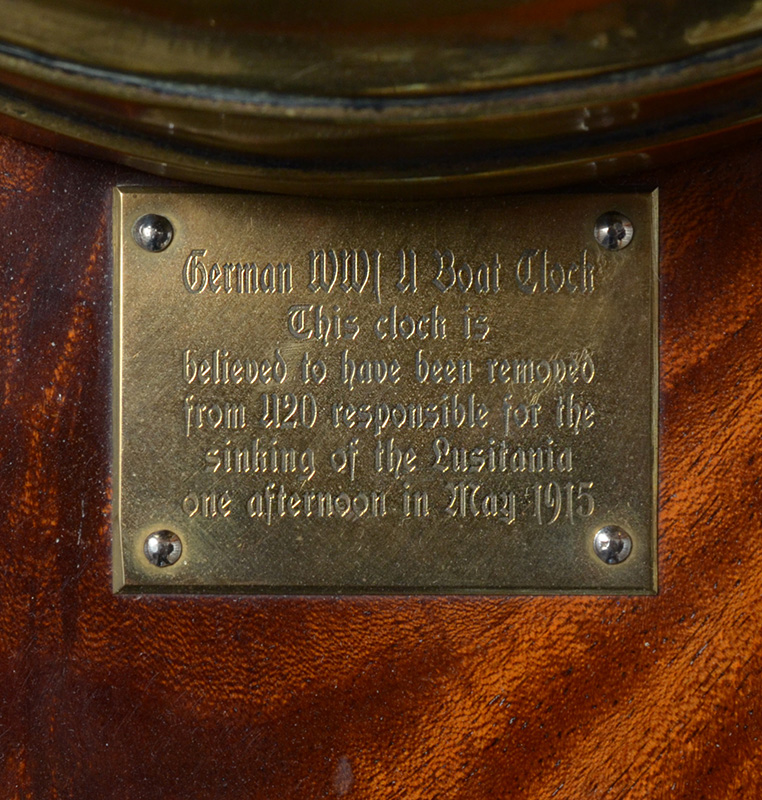
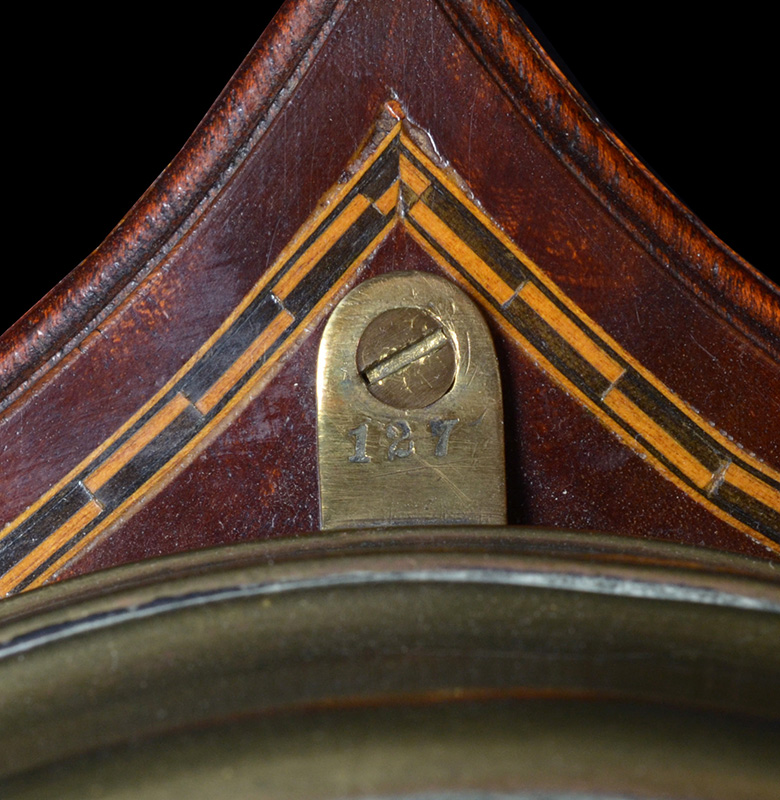
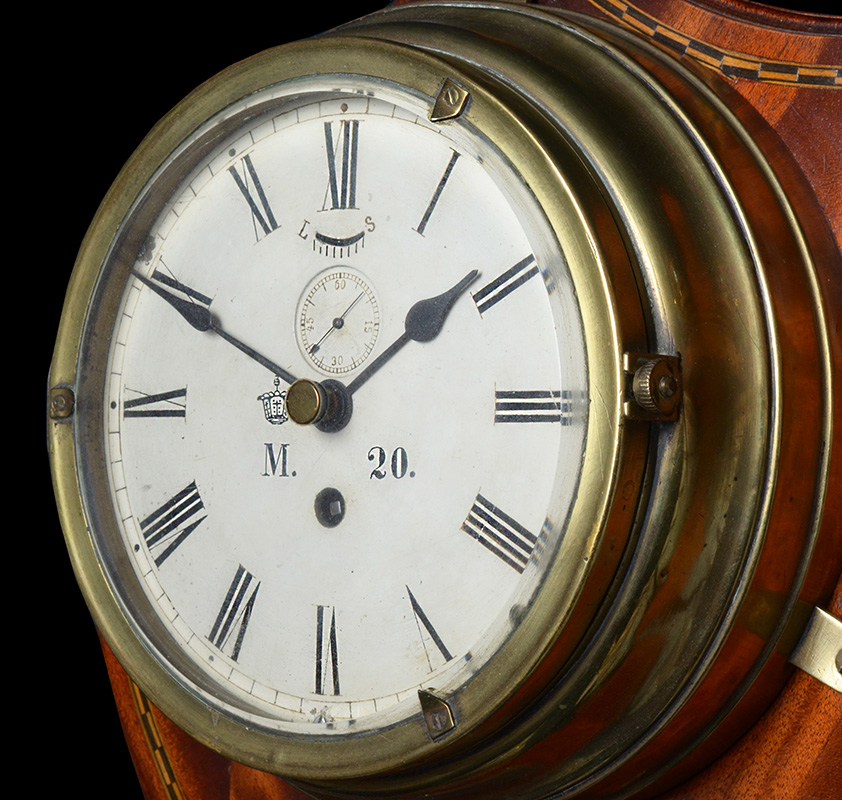
Imperial German U-Boat Clock
Attributed To U-20 | Lusitania Interest
Beautiful Imperial German U-Boat bulk head clock, attributed to U-20, which is believed to have sunk the RMS Lusitania.
Fine quality brass-cased bulk head clock. The clock with hinged front with screwed in front glass. The silvered clock dial with black numbers, Imperial German Kaisermarine crown with 'M', and 'U-20' designation. The dial with sunken seconds at the 12.00 position. The clock bearing the case number '127'. The clock mounted to a beautiful mahogony marquetry shield shaped presentation backing. Immediately below the clock is a brass plaquette with the following description, "German World war I U Boat clock. This clock is believed to have been removed from U 20 responsible for the sinking of the Lusitania one afternoon in ay 1915".
Condition report: Some general use evident. various small dents. Two small holes to the front opening panel (purpose unknown) may have been where the front originally opened. The silvered dial in generally good to very good condition. The Imperial german Kaisermarine crown, along with the number '20' in clear condition. The mahogony marquetry backing in excellent condition with good polish. The clock functioning. No warranty implied.
Provenance: The clock acquired for the Hicks collection from auction in the 1980s. Acquired directly from the Hicks collection for the Clayton German Naval collection in the 1990s. When first acquired for the Clayton collection, the clock wasn't working reliably. Clayton had the clock fully serviced by clock specialists in Horsham around 2010. The cost was approximately £200 (the original invoice not present).
Background to U-20: On 4th November 1916, U-20 grounded on the Danish coast south of Vrist, a little north of Thorsminde after suffering damage to its engines. Her crew attempted to destroy her with explosives the following day, succeeding, however, only in damaging the boat's bow, but making it effectively inoperative as a war ship. The U-20 remained on the beach having been largely stripped by souvenir hunters, until 1925, at which time the Danish government decided to blow it up.
Price: SOLD
Click here to return to category.
